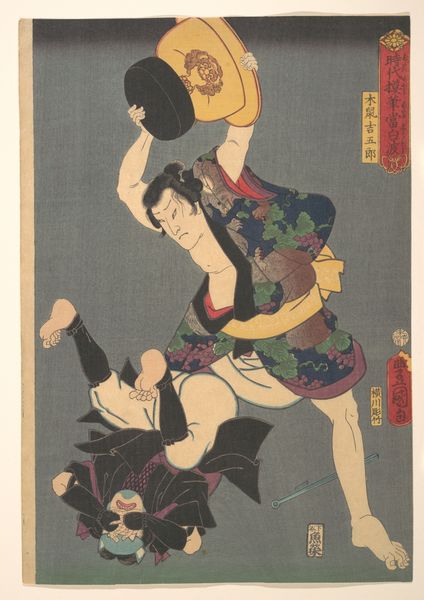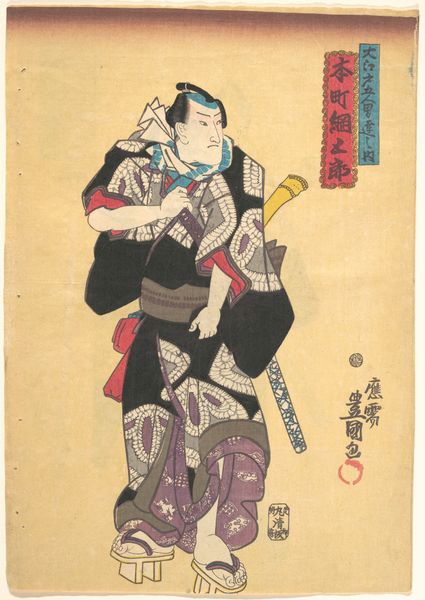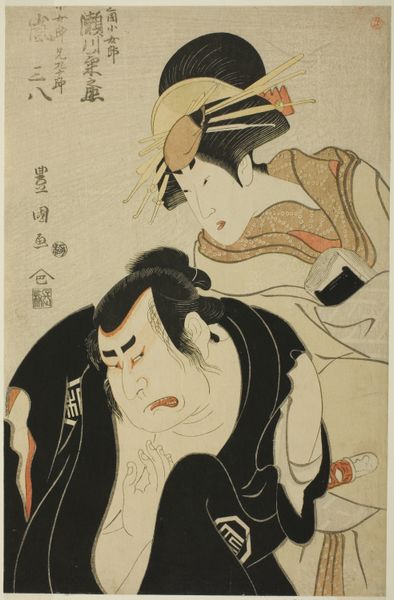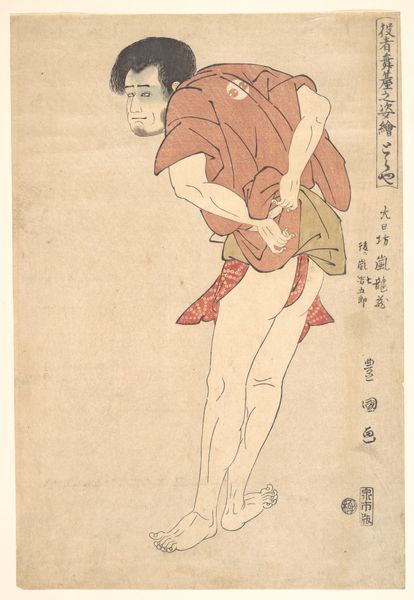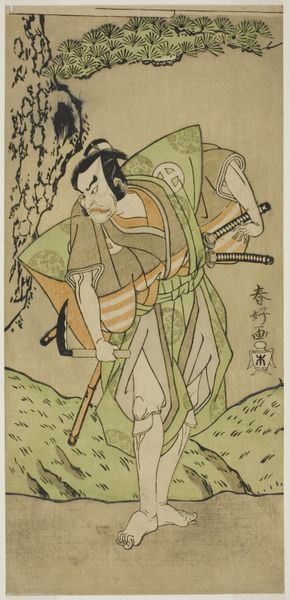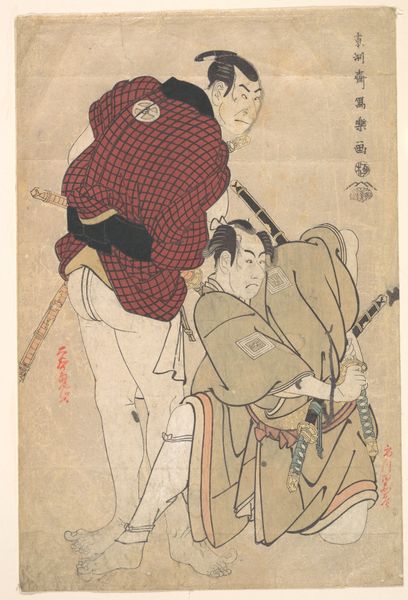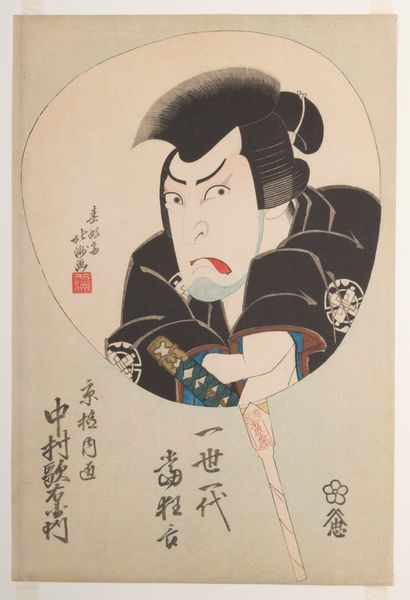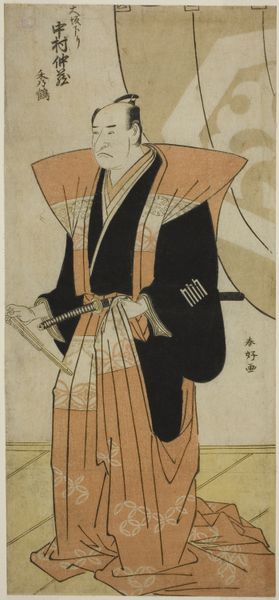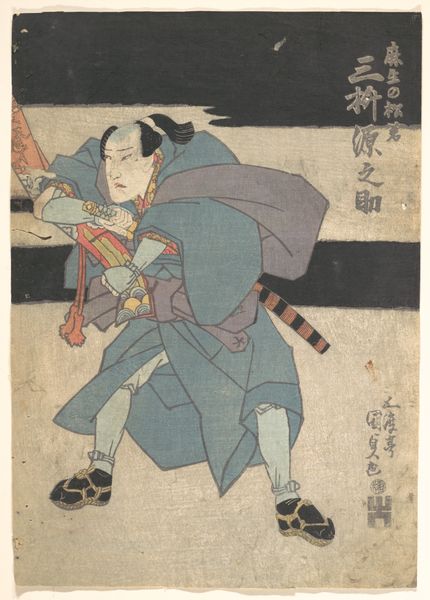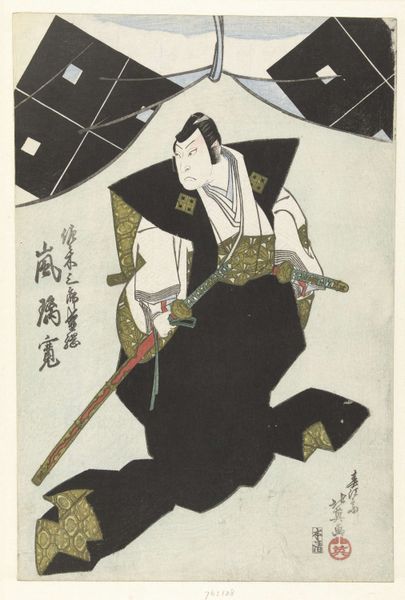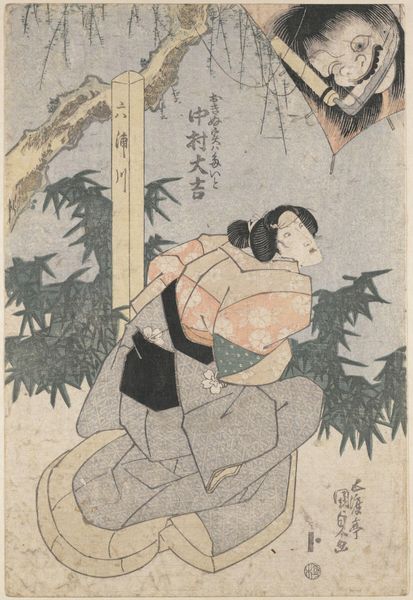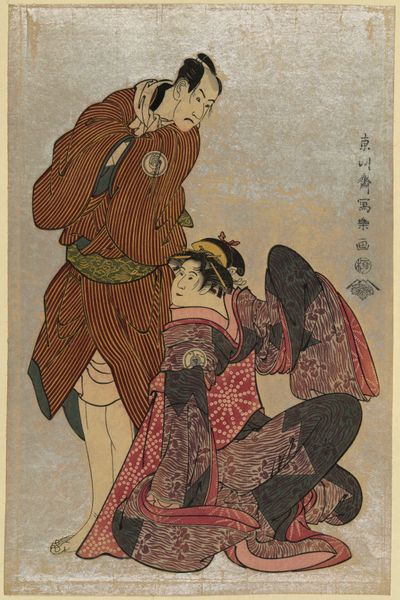
Masatsuya: Otani Oniji III as Ono Sadakuro, from the series "Portraits of Actors on Stage (Yakusha butai no sugata-e)" 1794
0:00
0:00
print, woodblock-print
#
portrait
# print
#
caricature
#
asian-art
#
caricature
#
ukiyo-e
#
woodblock-print
Dimensions: 38.1 × 25.3 cm (15 × 9 15/16 in.)
Copyright: Public Domain
Editor: This striking image is titled *Masatsuya: Otani Oniji III as Ono Sadakuro*, a woodblock print created around 1794 by Utagawa Toyokuni I. The figure's exaggerated pose and features are instantly captivating. What strikes me most is the sharp contrast between the pale skin and the dark clothing, creating an almost theatrical drama. How do you read this piece? Curator: Precisely. We observe a deliberate use of line and form. The artist utilizes bold, unwavering lines to define the figure, thus creating a strong sense of presence. Note the angularity of the limbs juxtaposed with the curving lines of the garments. The interplay creates visual tension, directing the viewer's eye throughout the composition. Further, observe how negative space contributes to the figure's dynamic pose, enhancing its exaggerated and almost grotesque qualities. Editor: I see that now – how the angular lines accentuate the exaggeration, but what about the limited color palette? Is there something to decode there? Curator: Indeed. The restricted palette is crucial. The artist refrains from naturalistic representation, opting instead for select colors that enhance the visual impact. Consider how the strategic use of black serves to accentuate depth and contour. The choice allows specific features, like the face and hands, to draw primary attention. Could this be indicative of its caricature roots? Editor: That’s a perspective I hadn't fully considered before. I was so focused on the theatricality of the figure. Curator: This serves to highlight how careful formal analysis—a focused investigation of line, color, and composition—can lead us towards deeper interpretative possibilities, even without immediately concerning ourselves with external contextual information. Editor: That makes complete sense. I now appreciate how the intrinsic elements contribute to the artwork's expressive power beyond just its face-value imagery. Thanks for helping me look closer.
Comments
No comments
Be the first to comment and join the conversation on the ultimate creative platform.
